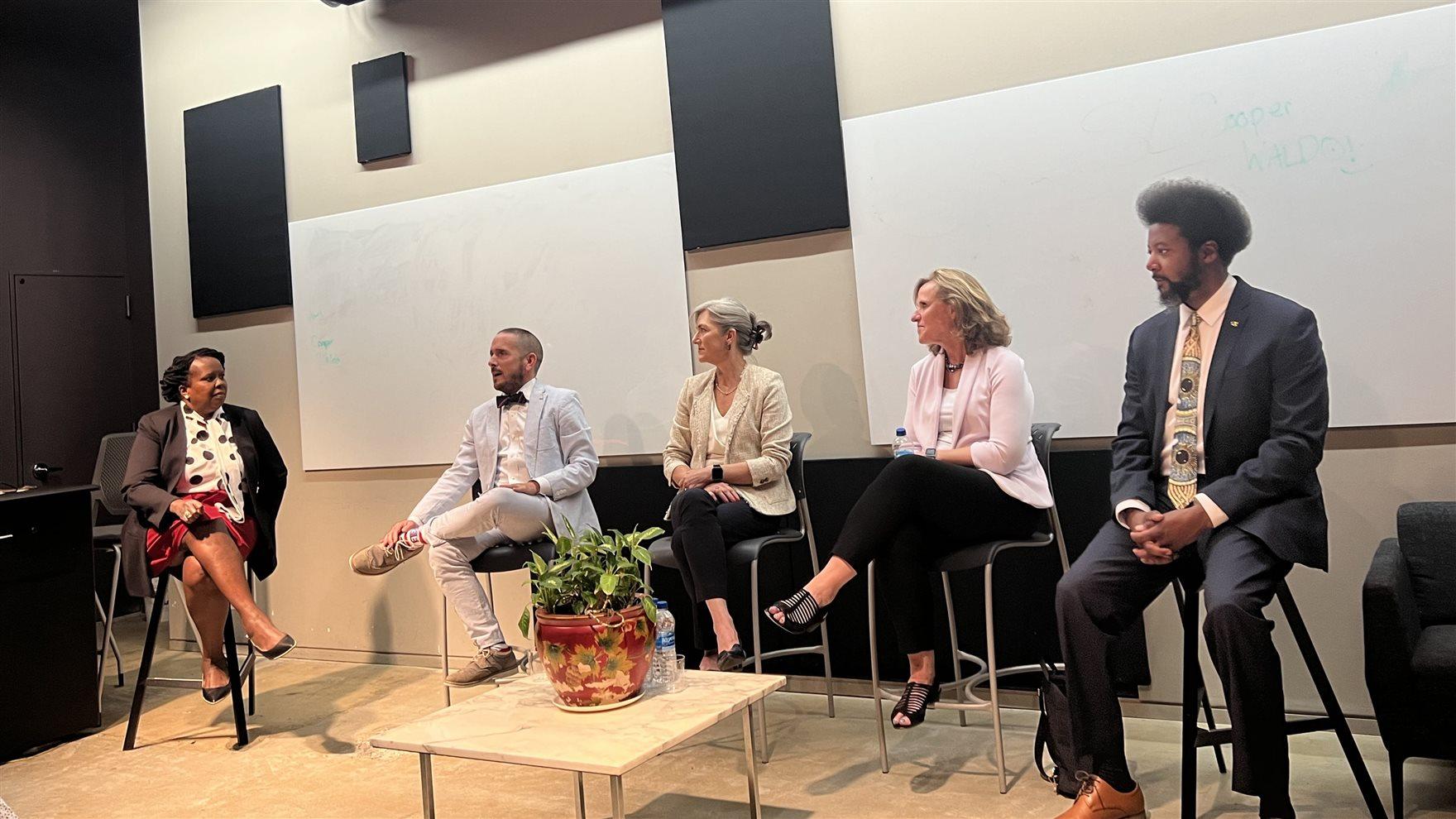Higher Education Leaders Discuss the Future of College Admissions

- Philadelphia Films With Drexel University Cameos
- Drexel University Receives Higher Education Excellence and Distinction (HEED) Award for Its Culture of Belonging
- New Research Recommendations for Supporting Autistic Adults to Ensure Their Communication Success
- ‘Too Much Going On’: Autistic Adults Overwhelmed by Nonverbal Social Cues

As admissions offices across higher education drop test score requirements, their applicant pools are not only growing but becoming more diverse.
It’s an exciting yet challenging time for admissions professionals, who must find alternate ways to gauge college readiness — a task complicated by the question of how thoroughly high school students were educated during periods of remote learning during the COVID-19 pandemic.
Drexel University explored those issues May 17 in its Summit on the Future of College Admissions, which convened leaders from Philadelphia institutions and the nonprofit Common App, an application service that allows students to electronically apply to any of more than 900 public and private schools.
Moderated by Evelyn Thimba, Drexel’s senior vice president of enrollment management, the panel included the school’s dean of undergraduate admissions, Michael Keaton, as well as Whitney Soule, vice provost and dean of admissions for the University of Pennsylvania, and Shawn Abbott, vice provost for admissions, financial aid and enrollment management for Temple University. Rounding out the lineup was Jenny Rickard, president and CEO of the Common App.
“None of us could complete this process without you,” Keaton told an audience of high school guidance counselors. “Your biggest contribution will be in keeping up with what’s going on and communicating with us, your students and their parents about the broad scope of options.”
Applicant Behavior is Changing
Since 2019–2020, the percentage of Common App institutions that don’t require students to submit SAT and other test scores has jumped from 45 percent to 95 percent, a switch Rickard considers the biggest driver of fluctuating demographics among the applicants who use her service.
“Compared with two years ago, first-generation college students have increased at twice the rate of non-first-generation college students,” she said. “In that time, we’ve also seen an 18 percent increase among underrepresented minorities compared with 11 percent for their counterparts.”
This year, Drexel’s second as a test-optional school, about 60 percent of its applicants did not submit scores and applications rose 7 percent — no surprise, Keaton said, as students tend to apply more widely once the requirement to report test results has been removed.
Other new trends this year were pandemic-related: students waiting longer to commit to schools as they pursue previously stalled campus tours, and a rise in applications made “off cycle,” or not in a student’s graduation year.
“Pre COVID, we would see about 3 percent to 5 percent of our pool applying off cycle, but in 2021, we saw a 20 percent increase in that population,” Thimba said about Drexel’s admissions results. “Of course, we know why. But we haven’t seen it go back to pre-COVID numbers: This year, the increase in applications from students who applied outside their graduation year increased by 10 percent over pre-COVID years.”
Demographics Are Shifting
A key goal of the new admissions policies is to help underrepresented groups gain access to higher education.
“We’re anticipating that our freshman class will include about 41 percent students of color, 28 percent who are Pell Grant-eligible and 30 percent who represent the first generation in their families to go to college, Keaton said.
At Temple, Abbott added, “this will be the first year in history that our incoming class won’t have an ethnic majority.”
Rickard said her staff has supported these changes by updating application questions about sex and gender identity, school discipline, citizenship and criminal history.
“In high school, Black students are four times more likely to be disciplined, and underrepresented students are more likely to go to a school that reports discipline,” she said. “So, we asked institutions to decide for themselves whether to ask about students' disciplinary history, and now 50 percent of Common App members, rather than all, ask that question.”
Making the process more inclusive is important, she said, because nearly 60 percent of the students who apply through the Common App come from ZIP codes in the top income quintile versus 6 percent from the bottom quintile.
Keaton challenged admissions officers and guidance counselors to change that, in part by ensuring that community colleges are “thought of everywhere as a viable option for students of all different levels of income and academic achievement.”
Challenges Lie Ahead
It will be up to enrollment officers to help schools measure their success.
One concern is whether institutions are prepared to provide the financial and academic support that will be needed by the students they are now enrolling.
Soule added that, while admissions officers feel “pressure to be on the right side of history” when it comes to test-score policies, they will need time to assess how their decisions are serving their students and institutions.
Guidance counselors can best help graduating seniors, she suggested, by explaining what some will consider a difficult truth: With applicants from a wider array of high schools now invested in the process, “we are not always going to be admitting from the same places where we have admitted before.”
With that unpredictability at play, Keaton said, “we all have a responsibility to try to get closer to the narrative that we always push: finding the best fit. Students and their counselors need to look at that before they even start applying.”
This story was written by Beth Incollingo.
In This Article
Drexel News is produced by
University Marketing and Communications.